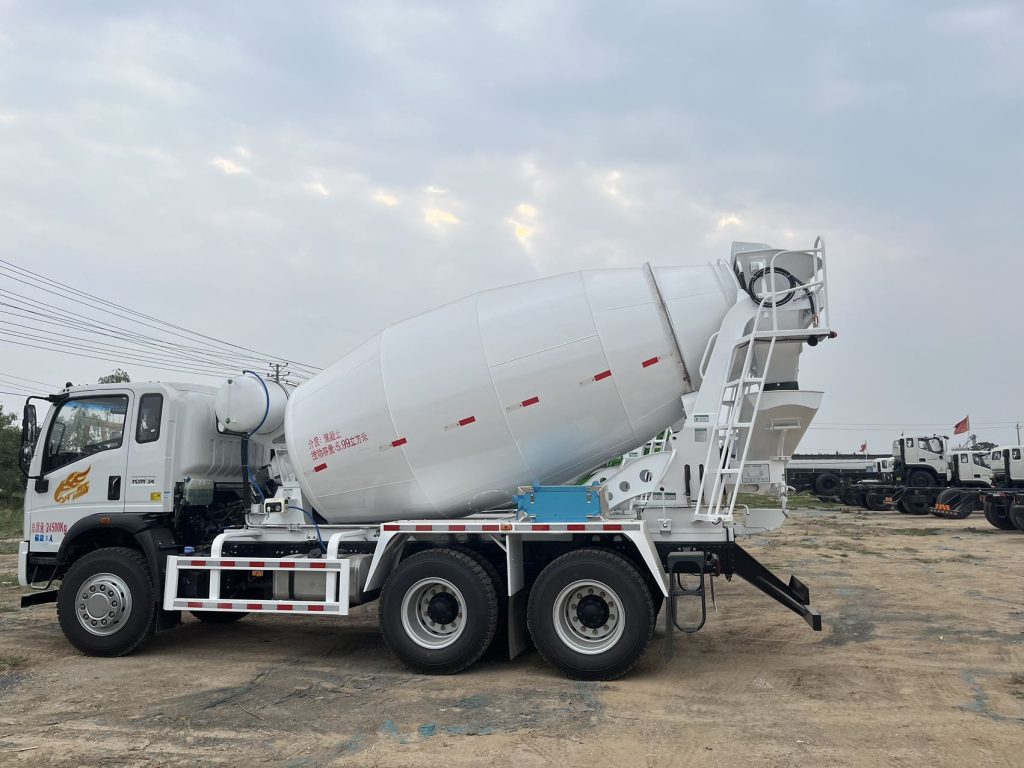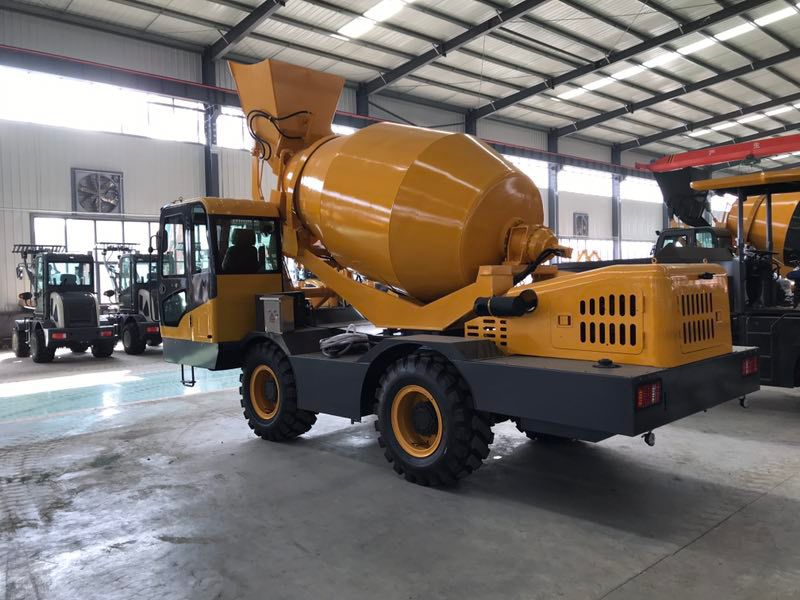Concrete tankers, also known as concrete mixing trucks or snail trucks, are special trucks specially used to transport concrete for construction.

I. Basic structure and composition
Concrete tankers are mainly composed of the following parts:
- chassis: It is usually composed of a car chassis, which gives the tanker the ability to walk independently.
- stirring cylinder: This is the core component of the tanker, usually cylindrical, used for loading and mixing concrete.The mixing cylinder is equipped with spiral blades inside to keep the concrete evenly stirred during transportation.
- transmission system: Including the engine, gearbox, etc., to provide power for the tanker and drive the rotation of the mixing cylinder.
- water supply mechanism: Used to add water to the mixing cylinder when needed to adjust the consistency of the concrete.
- Inlet and outlet systems: It includes a inlet and a discharge port, which are respectively used to add concrete to the mixing cylinder and unload the concrete from the mixing cylinder.
- Control system: It includes an electronic control system and a hydraulic system, which are used to control the rotation, lifting and driving of the mixing cylinder, etc.

II. Principle of operation
The working principle of the concrete tanker is: during transportation, the mixing cylinder always rotates slowly (generally 3-6 revolutions/min) to ensure that the concrete will not solidify.When unloading is required, the mixing cylinder will reverse to unload the concrete from the discharge port.During the feeding and transportation process, the mixing cylinder is turned forward and the concrete moves inward along the blade; when the material is discharged, the mixing cylinder is reversed and the concrete is discharged outwards along the blade.
III. Technical parameters
The technical parameters of concrete tankers vary from manufacturer to manufacturer and model, but in general, there will be a certain range of parameters such as length, width, height and load capacity.For example, a general concrete tanker has a width of about 2.5 meters and a height of about 3.8 meters, and its length varies according to the model and the volume of the mixing cylinder.The volume of common concrete tankers is 3m3, 6m3, 8m3, 10m3, etc., and the length of the corresponding models will increase accordingly.For specific models and requirements, please contact the sales engineer of Meycheny Machinery for consultation.
IV. Types and characteristics
Concrete tankers can be divided into various types according to their structure and use, such as traditional concrete tankers, forced concrete tankers and dump concrete tankers.
- Traditional concrete tanker: The concrete can be stirred during transportation to maintain the uniformity and stability of the concrete.Suitable for infrastructure projects of small and medium-sized projects.
- Forced concrete tanker: The concrete in the mixer truck is forcibly pushed out through the forced loading equipment to realize the conveying and unloading.It has uniform mixing, stable performance and high conveying efficiency, and is suitable for large-scale infrastructure projects.
- Dump concrete tanker: Dump the concrete directly from the tanker without using other conveying equipment.It is simple to operate and is suitable for engineering scenarios where concrete delivery is more flexible.

V. Areas of application
Concrete tankers are widely used in various construction projects, including real estate, public buildings, water conservancy projects, industrial buildings, bridge projects, road projects, etc.Its efficient concrete conveying capacity provides strong support for modern building construction.
VI. Operating Procedures and Safety Precautions
When operating concrete tankers, operating procedures and safety precautions should be strictly observed, such as regular inspection of the body and hydraulic system, maintaining the slow rotation of the mixing cylinder, and controlling the driving speed.At the same time, care should be taken to avoid adding water to the mixing cylinder during transportation (unless the concrete consistency needs to be adjusted under certain circumstances) to ensure the quality of the concrete.
Concrete tankers are one of the indispensable and important equipment in modern building construction.Understanding its structure and working principle, technical parameters, types and characteristics, as well as operating procedures and safety precautions, is of great significance to improve construction efficiency and quality.For more information, please contact the after-sales engineer of Meycheny Machinery to answer for you.
Leave Message To Us
You can contact us by leaving a message or calling our sales hotline
Tip:
We would appreciate it if your information includes the equipment required, type of project, country of export, and budget amount so that you can get the most accurate quote!
Service Process: Enterprise Negotiation - Proposed Solutions - Production and Commissioning - Operational Production
Follow on Social